Nasi Kandar, Roti, and Teh Tarik: food in Northwestern Malaysia has a fascinating tie to India.
Come along with our writer Oz as he shares his experiences with this unique fusion cuisine.
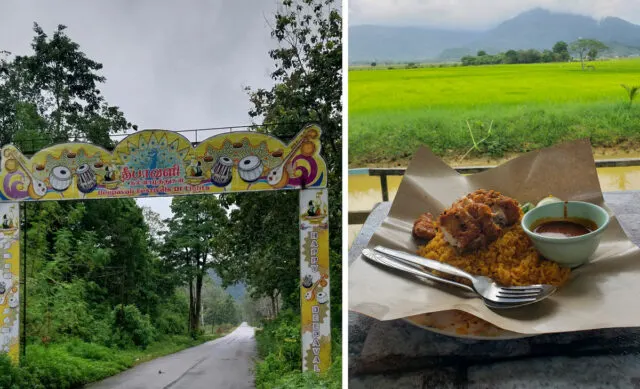
Finding India in Malaysia
It’s been two years since my last trip to India. Sometimes, as I daydream, I can still hear the motorcycles honk in Delhi, smell the aromas of Masala chai in the morning, and taste the spices of my favorite Mughlai curry.
I didn’t expect to encounter my old memories thousands of miles away from the Indian subcontinent, in Malaysia. And yet, my time in the Malay Peninsula proved to me again that cultural interaction and exchange are found everywhere, and most importantly – can be quite delicious.
Nasi Kandar: food in Northwestern Malaysia
When I first arrived in Langkawi, an island in Northwestern Malaysia, I didn’t know what to expect from Malaysian food.
Before the trip, out of curiosity, I spent some time watching and reading content about Malaysian food. I was particularly impressed by a certain video on Instagram, in which an endless array of curries and sauces were poured over yellow rice. “World’s Best Nasi Kandar”, the title said.
I had no idea what Nasi Kandar meant, nor what it tasted like. I just knew – this was something that I definitely had to try.
As if it was a miracle, I spotted “Restoran Nasi Kandar Haji Ali” during an afternoon stroll around the city center. Easy as that, I knew where I was going to have my dinner.
Standing by the counter, I watch the owner flood my plate of rice with colorful curries, then add pickles and fried chicken on the side.
The owner explained to me that this is called Mamak food, simply put, Muslim Indian Malaysian food. I nodded, curious and hungry, and sat down to eat.
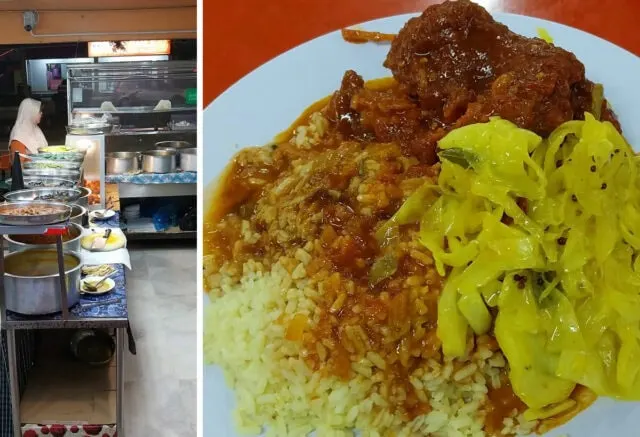
The first bite was completely overwhelming. In a good way.
The concoction of sauces soaked perfectly into the fragrant, yellow rice, and the mustardy cabbage pickles were a refreshing twist to this rich dish.
I was mostly impressed with how Nasi Kandar was clearly of Indian origin, yet at the same time – Malaysian. I was eager to learn more about this unique cuisine, to understand better what I was eating and what role Malaysian-Indian food has in Malaysia’s gastronomy.
India meets Malaysia: trade and exploration
According to historical sources, merchants and explorers from India have had contact with Malayan kingdoms since the 1st to 5th centuries AD. Through trade and commerce, culture and religion were also spread. Buddhist philosophy, Hindu architecture, and Tamil folklore made their way to the Southeast Asian Malay Peninsula.
And, with culture and trade, comes food. They brought ingredients such as coconut, eggplants, and mustard seeds, as well as dishes like coconut-based curries and flaky paratha bread to the region.
During the European colonization of Malaya, additional waves of immigration from India (mostly from the Southern state of Tamil Nadu) arrived in the British and Portuguese colonies of Malaya, with many of the new migrants assimilating into the local population.
Hinduism in Malaysia
Nowadays, most Malaysian Indians practice Islam, yet you can also find Hindu and Christian Indian communities in certain areas.
On my third day in Langkawi, I went on a road trip to learn more about Malaysia’s Hindu community.
I visited local temples and met members of the Hindu Tamil community. I learned that most Hindus have indeed migrated from Tamil Nadu and have been living in Malaysia for generations.
Contrary to Malaysia’s Indian Muslims, many Malaysian Hindus still lead their lives separately from the general Malaysian population (especially in rural areas), and thus, Hindu cuisine in Malaysia is somewhat identical to Tamil cuisine in India.
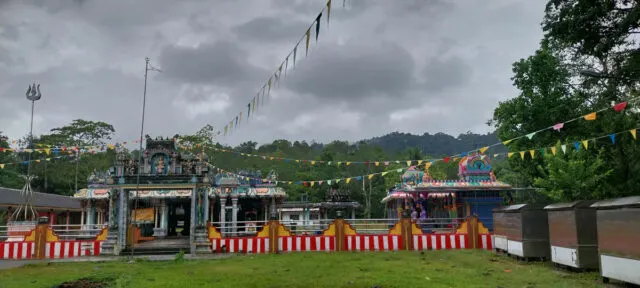
Indian Muslims in Malaysia
Indian Muslims, on the other hand, opened Mamak stalls – indoor and open-air food establishments still found today that cater to the general population, as the menu is varied and prices are usually low.
The word “Mamak” derives from the Tamil language, meaning “maternal uncle”. Traditionally, the word was used by children as an honorific to respectfully address adults.
Mamak food has become a part of everyday life for many Malaysians, who may enjoy Teh Tarik (Malaysian-style Masala Chai) with Roti for breakfast, Nasi Kandar for lunch, and Mamak stir-fried noodles in the evening.
Nowadays, due to the popularity of Mamak food, there are also similar stalls run by local Malays and Chinese-Malaysians.
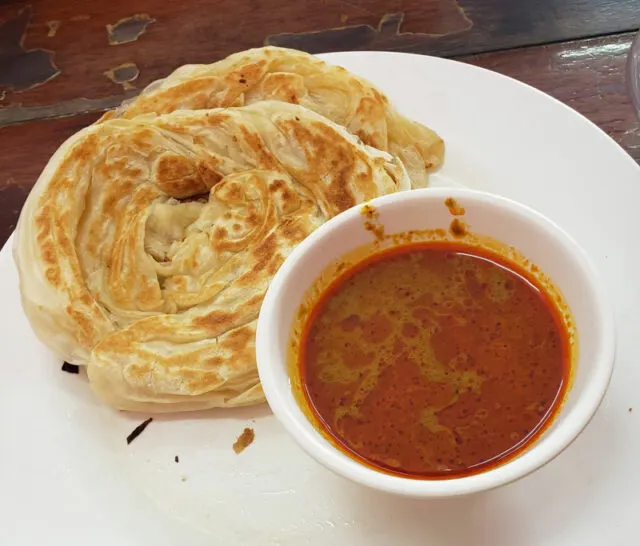
Mamak curries served with Nasi Kandar
As I kept returning to Haji Ali restaurant, I started learning more about Mamak food. I was especially interested in the curries that are served with Nasi Kandar.
Many of them are of Indian origin, but others are newer Malaysian inventions, using non-Indian ingredients like sweet soy sauce and Laksa leaves.
Ayam Kurma was one of my favorite curries to have tried on this trip. It is an aromatic chicken curry, characterized by velvety, almost-white gravy. It brought me back to my trip to Lucknow in Northern India, where Mughlai royal cuisine can still be found. Nevertheless, the Malaysian version is mellower and a bit sweeter than its Indian predecessor, making it a good contrast to spicier curries that may be served with Nasi Kandar.

Malaysian fusion cuisine
As Mamak food grew in popularity within the general population, Mamak chefs found themselves recreating and incorporating non-Indian dishes, such as Singaporean Kaya toast and Chinese-Malaysian Char Kway Teow.
Mee Goreng (Mamak-style stir-fried hen noodles), for instance, has become a popular dish that can be found in almost every Mamak restaurant, despite being of Chinese origin.
In the same way, Pasembur, a salad of Indonesian origin, made its way into many Mamak restaurants in Northwestern Malaysia. Also known as Indian Rojak, Pasembur is made of sliced fruit, vegetables, and fritters, drenched in a thick gravy made of peanuts and/or shrimp paste.
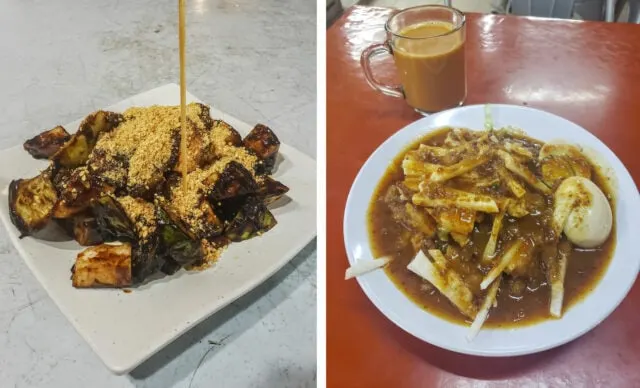
Comfort food for the soul in Malaysia
It is important to note that Malaysian-Indian food is not about looking pretty. Garnishes and fresh green vegetables are seldom used, and dishes tend to be on the heavier side.
A meal at a Mamak restaurant might not be photogenic enough for your next Instagram post, but it will surely satisfy your heart and soul, comforting every inch of your body.
Slowly and surely, as a result of trade, religion, and necessity – a new cuisine has formed. While innovation and adaptation have created new dishes, cooking methods, and culinary concepts, India’s culinary spirit is still there, alive and kicking.
If you look closely, you might get a glimpse of it, blessing the steaming pots of Mamak curries with their magical aromas.
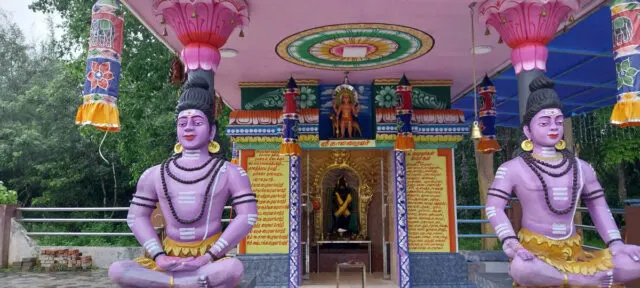
If you liked this recipe, here are some similar dishes you may enjoy!

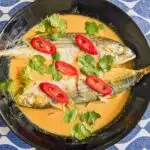
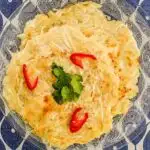
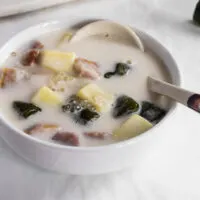
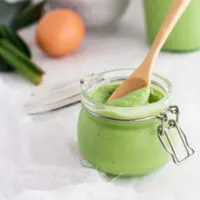

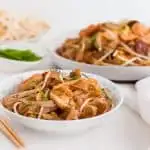
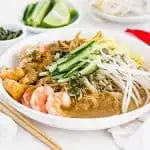
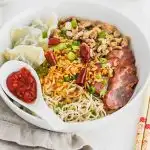
Alice
Friday 22nd of November 2024
Oz, Awesome writing. You make me feel like part of your adventure. Amazing.